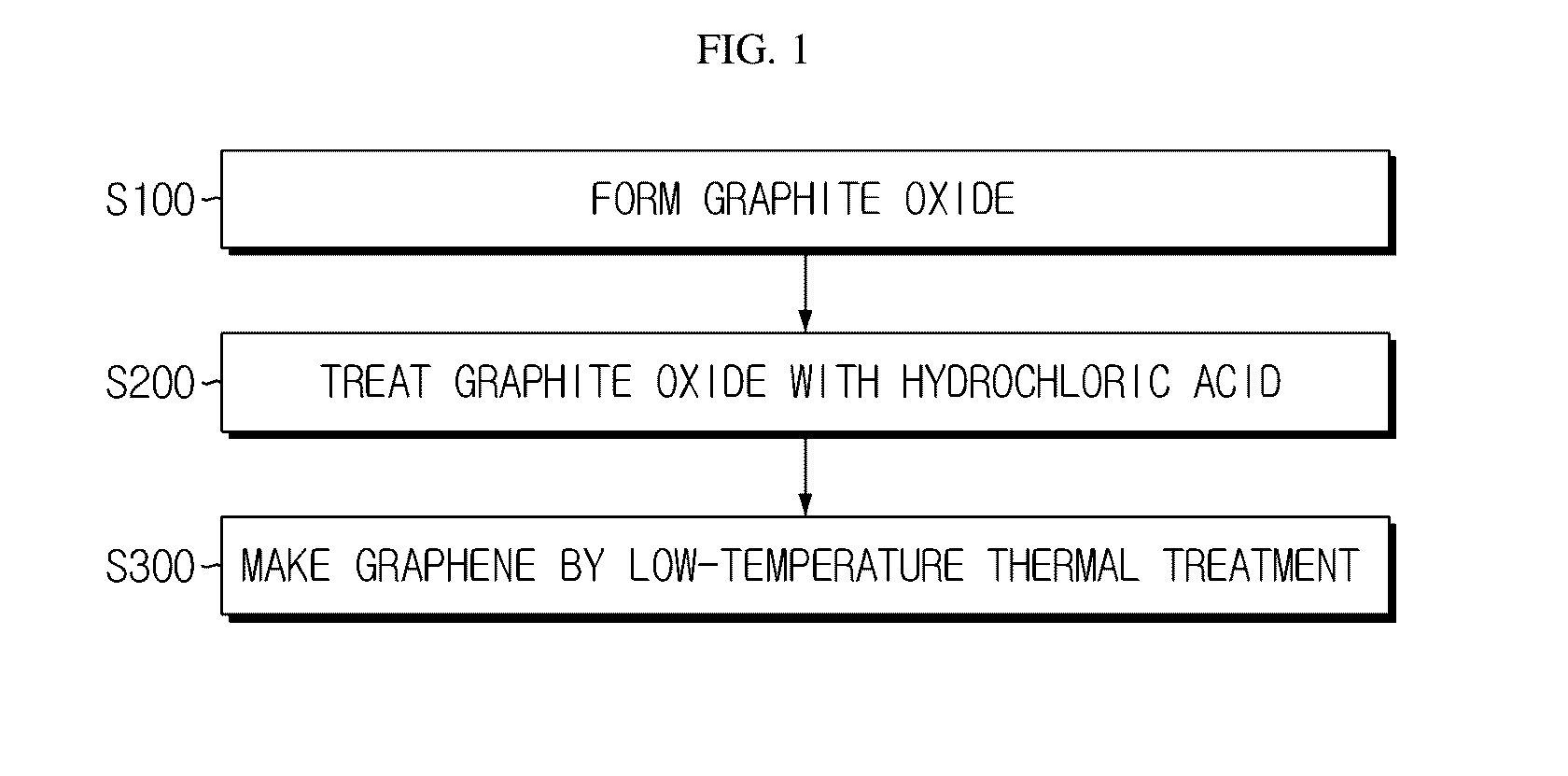Porous graphene for cathode of secondary battery and its manufacturing method
a secondary battery and porous graphene technology, applied in the field of graphene, can solve the problems of high production cost, low yield, economic feasibility and utilization, etc., and achieve the effects of simple composing process, reduced thermal treatment temperature, and great economic feasibility and utilization
- Summary
- Abstract
- Description
- Claims
- Application Information
AI Technical Summary
Benefits of technology
Problems solved by technology
Method used
Image
Examples
experimental example
[0041]In the Experimental Example, NaNO3 (1 g) and H2SO4 (45 mL) were put into 1 g of graphite and stirred at 0° C. for about 30 minutes. KMnO4 serving as an oxidizer was added to the solution while changing its amount to 4 g, 5 g and 6 g for each sample, and was dissolved by stiffing at 50° C. for about 2 hours. The amount of the oxidizer was changed differently in order to adjust the oxidation degree of graphene, namely the functionalization degree of the graphene surface. After that, 100 mL of deionized water was put thereto and H2O2 (6 mL, 35%) was added to the solution, and its color was changed into light brown while bubbles are generated. The solution was filtered, and 150 mL of 10% hydrochloric acid and 100 mL of 37% hydrochloric acid were put successively to floating materials remaining after filtering. The filtered resultant material was put into an oven of 120° C. for about 6 hours to compose graphene. In this process, the color of the graphite oxide was changed from ligh...
PUM
| Property | Measurement | Unit |
|---|---|---|
| temperature | aaaaa | aaaaa |
| voltage | aaaaa | aaaaa |
| pore size | aaaaa | aaaaa |
Abstract
Description
Claims
Application Information
 Login to View More
Login to View More - R&D
- Intellectual Property
- Life Sciences
- Materials
- Tech Scout
- Unparalleled Data Quality
- Higher Quality Content
- 60% Fewer Hallucinations
Browse by: Latest US Patents, China's latest patents, Technical Efficacy Thesaurus, Application Domain, Technology Topic, Popular Technical Reports.
© 2025 PatSnap. All rights reserved.Legal|Privacy policy|Modern Slavery Act Transparency Statement|Sitemap|About US| Contact US: help@patsnap.com



